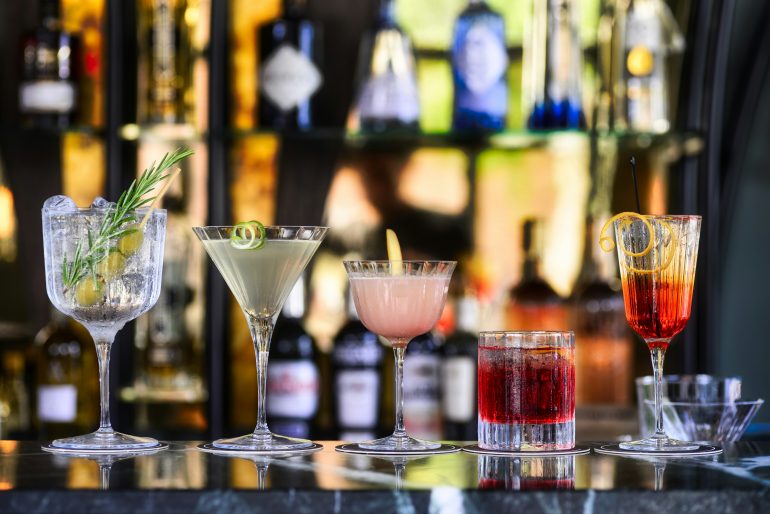Cocktail bars ten years ago looked and felt dramatically different from what exists today. The changes go far beyond just updated menus or trendier decor – the entire philosophy around what makes a good cocktail experience has shifted. Understanding this transformation helps explain why walking into certain bars today feels completely different from the cocktail scene of the early 2010s, and what drinkers should reasonably expect when they order a £14 Negroni in 2025.
From Molecular Mixology to Accessible Craft
The mid-2010s saw cocktail culture obsessed with spectacle and technique for its own sake. Bars competed to create the most elaborate presentations, the most unusual ingredients, and the most complex preparations. Drinks arrived smoking under glass domes, required three minutes of tableside preparation, or featured foams, spheres, and other molecular gastronomy techniques borrowed from high-end restaurants.
This phase served a purpose – it pushed boundaries and explored what was possible – but it also created distance between bartenders and drinkers. The message felt more like “look what we can do” rather than “here’s something delicious for you to enjoy.” Many of these drinks were impressive to watch being made but not particularly pleasant to actually drink.
The current era has pulled back from that extreme. Technique still matters, but it’s employed in service of flavor and balance rather than showmanship. Modern quality bars focus on making genuinely delicious drinks with thoughtful ingredient selection and proper execution. The goal is creating something worth ordering again, not just photographing once for social media.
This shift means drinkers today should expect well-crafted cocktails that taste excellent without requiring a chemistry degree to appreciate. The best bars balance creativity with drinkability. They might incorporate interesting ingredients or techniques, but these elements enhance the drink rather than defining it.
The Ingredient Revolution
Ten years ago, most cocktail bars worked with the same relatively limited ingredient palette – standard spirits, commercial mixers, a handful of fresh fruits and herbs. Today’s better establishments source ingredients with the same care restaurants apply to their kitchens.
Seasonal approaches have become standard rather than exceptional. Spring menus feature rhubarb, elderflower, and fresh herbs. Summer brings stone fruits and berries. Fall introduces apple, pear, and warming spices. Winter showcases citrus and preserved fruits. This seasonal rotation reflects both ingredient availability and flavor preferences that shift throughout the year.
House-made components have moved from novelty to expectation at quality venues. Syrups, cordials, bitters, and tinctures crafted in-house allow bars to control flavor profiles precisely and create signature drinks that can’t be easily replicated. The difference between a cocktail made with mass-produced grenadine versus house-made pomegranate syrup is substantial and immediately noticeable.
Sustainability considerations have entered the equation in meaningful ways. Progressive bars now think about waste reduction, using every part of ingredients, composting, and sourcing locally when possible. This isn’t just marketing – it impacts what appears in drinks and how bars operate. Citrus peels become oils and garnishes. Leftover fruit pulp transforms into syrups. These practices align with broader cultural shifts around environmental responsibility.
Atmosphere and Accessibility Changes
The cocktail bar atmosphere has undergone significant transformation. Early 2010s craft cocktail culture often felt exclusive and intimidating. Bars cultivated a speakeasy aesthetic with hidden entrances, dim lighting, strict house rules, and bartenders who sometimes seemed more interested in demonstrating their knowledge than making guests comfortable.
Today’s successful bars have largely abandoned that gatekeeping approach. Places like Bunga 90 represent the modern direction – establishments that maintain high standards for their drinks while creating welcoming environments where both cocktail enthusiasts and casual drinkers feel comfortable. The emphasis has shifted toward hospitality alongside craft.
This doesn’t mean everything has become casual and unsophisticated. Rather, bars have learned to maintain quality without the pretension. Staff are knowledgeable and happy to share that knowledge, but they’re not condescending. Dress codes have relaxed. Music volume allows conversation. The overall vibe says “we’re glad you’re here” rather than “you should feel lucky we let you in.”
The physical spaces themselves have evolved. Harsh, industrial aesthetics have given way to more comfortable, varied designs. While some venues still embrace dark, moody interiors, others opt for lighter, more open feels. The key shift is recognizing that atmosphere should enhance the drinking experience rather than making it more difficult to relax and enjoy.
Menu Design Philosophy
How cocktail menus present information has changed significantly. The elaborate, flowery descriptions that dominated earlier eras have largely given way to clearer, more practical information. Modern menus balance providing enough detail for informed ordering without overwhelming or confusing guests.
The structure has become more thoughtful too. Rather than just listing drinks alphabetically or by spirit, many menus now organize by flavor profile, intensity, or style. Categories like “bright and refreshing,” “spirit-forward,” or “rich and complex” help guests navigate toward drinks that match their preferences without needing extensive cocktail knowledge.
Pricing transparency has improved, though this varies significantly by venue. Better establishments present their full pricing upfront, including any premium spirit upgrades or modifications. The practice of listing attractive base prices but adding charges for anything that makes the drink actually good has thankfully become less common as guests have pushed back against it.
Menu rotation frequency has increased at ambitious bars. Where annual menu changes used to be standard, many now refresh quarterly or even more frequently. This keeps regular guests interested and allows bartenders to continually refine their craft. For drinkers, it means repeat visits offer new experiences rather than the same options every time.
Service Standards and Staff Knowledge
Bartender roles have professionalized considerably. What was once often a transitional job has become a legitimate career path with progression opportunities, better compensation, and genuine expertise development. This shift shows in the quality of service and knowledge guests encounter.
The best modern bartenders balance technical skill with genuine hospitality. They can execute complex techniques flawlessly while also reading the room, adjusting their approach based on what guests need. Some want education and conversation about ingredients and methods. Others just want a good drink without the lecture. Skilled bartenders navigate these different desires smoothly.
Recommendations have become more personalized and thoughtful. Rather than defaulting to the most expensive option or their personal favorite, good bartenders ask questions, listen to preferences, and make suggestions that genuinely fit what the guest is looking for. This consultative approach requires both product knowledge and people skills.
Training standards have risen across the industry. Many bars now invest significantly in staff education, sending bartenders to workshops, tastings, and competitions. This investment shows in the finished drinks and the quality of guest interactions. Drinkers benefit from more consistent experiences and staff who can answer questions with actual knowledge rather than guesswork.
Technology Integration Without Losing Soul
Technology has entered cocktail culture in ways both helpful and potentially problematic. Digital menus, ordering apps, and social media integration are now common. The question is whether these tools enhance the experience or detract from the human connection that makes bars special.
The best implementations use technology to handle logistics while preserving the social aspects. Digital menus can provide more information than printed versions, including detailed ingredients, allergen warnings, and flavor profiles. Ordering apps can reduce wait times during busy periods. These applications work when they’re optional and supplement rather than replace human interaction.
Social media has become unavoidable in bar culture. Instagram-worthy presentations drive significant traffic and awareness. The challenge is ensuring drinks are designed for taste and experience first, with visual appeal as a bonus rather than the primary goal. Bars that nail this balance create drinks that look great in photos because they’re well-crafted, not because they’re designed specifically for photography.
What Drinkers Should Expect Now
The maturation of cocktail culture means today’s drinkers should have higher standards. A well-made drink shouldn’t require forgiveness for being too sweet, too strong, or poorly balanced. Quality ingredients should be standard, not premium upgrades. Service should be knowledgeable and welcoming without pretension.
At the same time, reasonable expectations around pricing matter. Good cocktails cost more than they did a decade ago because ingredient quality has improved, labor costs have risen, and venues invest more in training and atmosphere. The £14-16 range for a quality cocktail in major cities reflects these realities. Complaints about pricing need context about what’s changed in terms of quality and operating costs.
The best part of cocktail culture’s evolution is the increased variety. There’s room now for everything from casual neighborhood cocktail spots to high-end destination bars, from classic-focused venues to experimental ones. Drinkers can choose their experience based on mood, occasion, and preference rather than having to conform to a single vision of what craft cocktails should be. That diversity represents the real progress – cocktail culture has matured enough to accommodate different approaches while maintaining quality standards across the spectrum.





